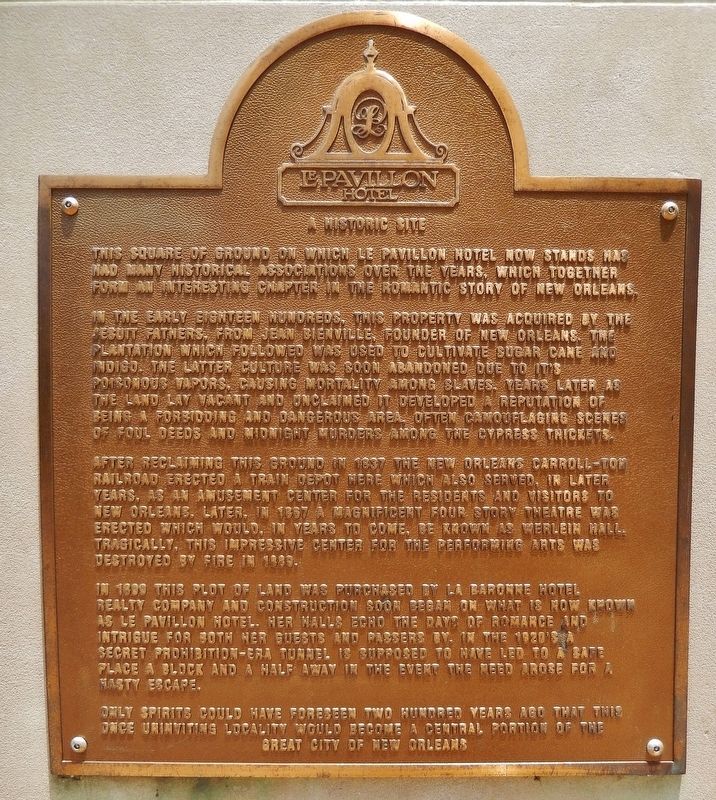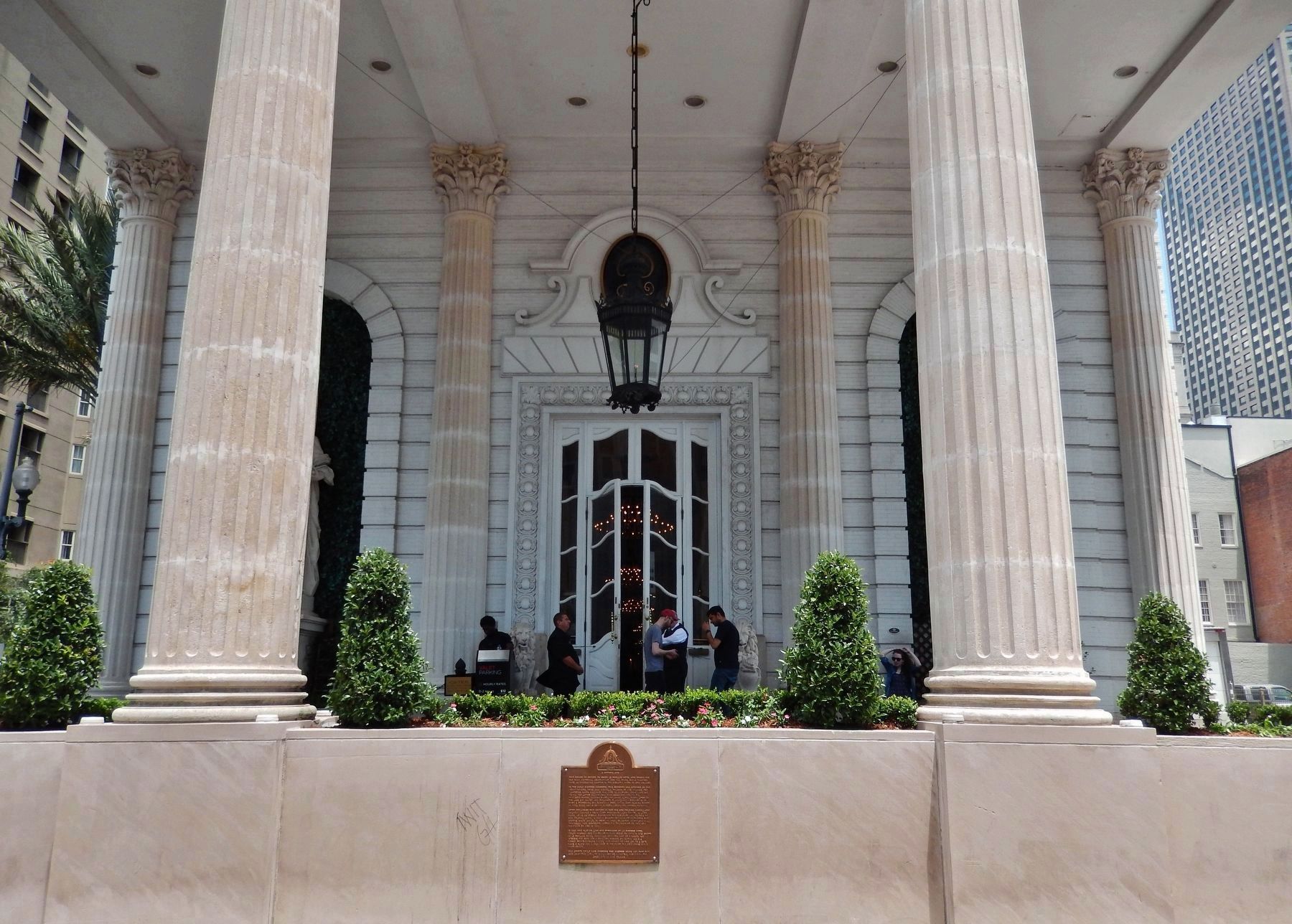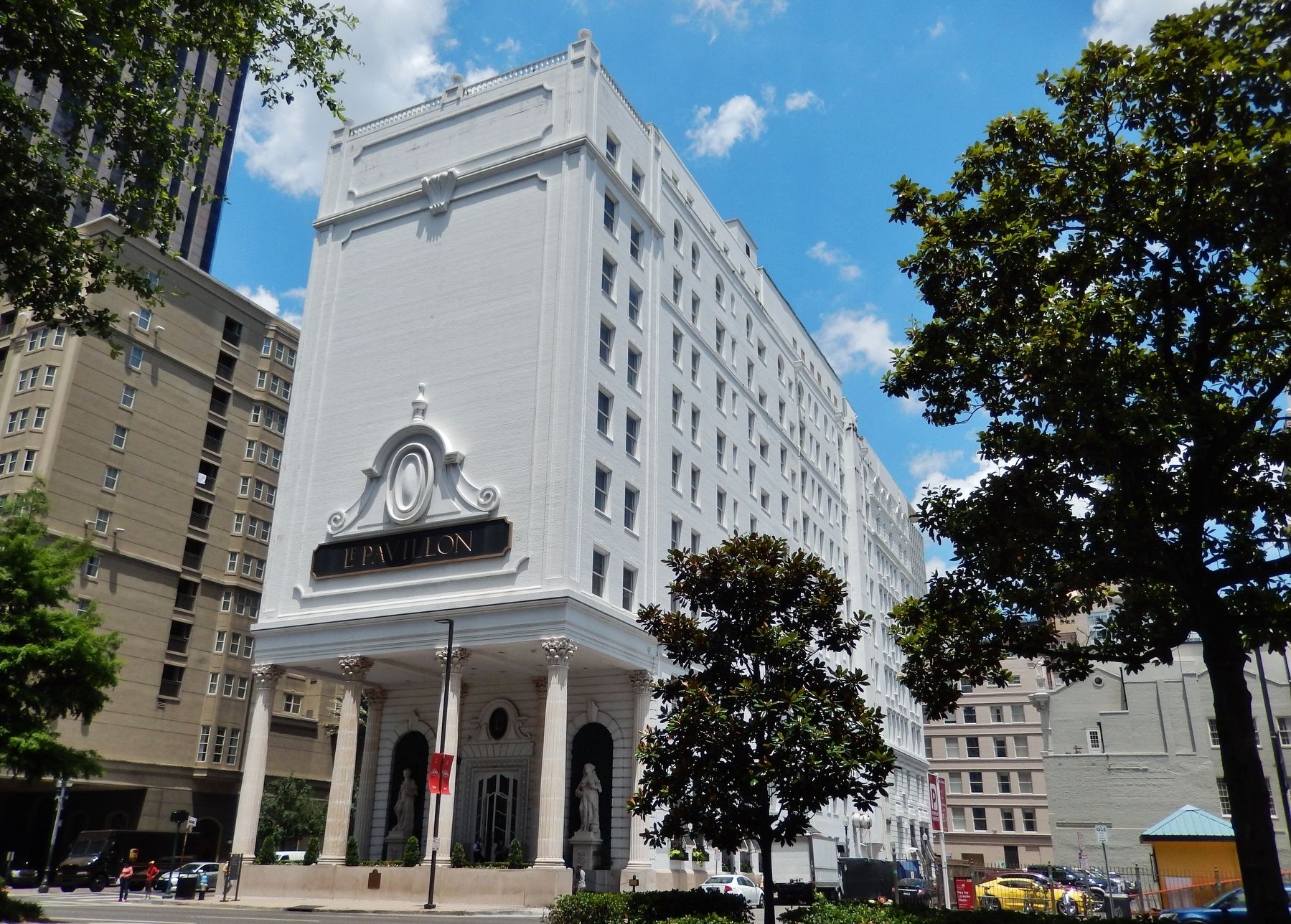Central Business District in New Orleans in Orleans Parish, Louisiana — The American South (West South Central)
Le Pavillon Hotel
A Historic Site
This square of ground on which Le Pavillon Hotel now stands has had many historical associations over the years, which together form an interesting chapter in the romantic story of New Orleans.
In the early eighteen hundreds, this property was acquired by the Jesuit Fathers, from Jean Bienville, founder of New Orleans. The plantation which followed was used to cultivate sugar cane and indigo. The latter culture was soon abandoned due to its poisonous vapors, causing mortality among slaves. Years later as the land lay vacant and unclaimed it developed a reputation of being a forbidding and dangerous area, often camouflaging scenes of foul deeds and midnight murders among the cypress thickets.
After reclaiming this ground in 1837 the New Orleans Carrollton Railroad erected a train depot here which also served, in later years, as an amusement center for the residents and visitors to New Orleans. Later, in 1867 a magnificent four story theater was erected which would, in years to come, be known as Werlein Hall. Tragically, this impressive center for the performing arts was destroyed by fire in 1889.
In 1899 this plot of land was purchased by La Baronne Hotel Realty Company and construction soon began on what is now known as Le Pavillon Hotel. Her halls echo the days of romance and intrigue for both her guests and passers by. In the 1920’s a secret prohibition-era tunnel is supposed to have led to a safe place a block and a half away in the event the need arose for a hasty escape.
Only spirits could have foreseen two hundred years ago that this once uninviting locality would become a central portion of the great city of New Orleans.
Topics. This historical marker is listed in these topic lists: Agriculture • Entertainment • Industry & Commerce.
Location. 29° 57.017′ N, 90° 4.371′ W. Marker is in New Orleans, Louisiana, in Orleans Parish. It is in the Central Business District. Marker is on Poydras Street west of Carroll Street, on the right when traveling west. Marker is a large metal plaque, mounted at waist-level on the retaining wall directly in front of the hotel main entrance. Touch for map. Marker is at or near this postal address: 833 Poydras Street, New Orleans LA 70112, United States of America. Touch for directions.
Other nearby markers. At least 8 other markers are within walking distance of this marker. Birdsall Building (about 300 feet away, measured in a direct line); Site of the St. Charles Theaters (approx. 0.2 miles away); Lafayette Square (approx. 0.2 miles away); Louisiana Spanish-American War Monument (approx. 0.2 miles away); Bank of Louisiana in New Orleans (approx. 0.2 miles away);
Kossuth (approx. 0.2 miles away); New Orleans Slave Depot (approx. 0.2 miles away); Lambert-Gallier Inn of Court (approx. 0.2 miles away). Touch for a list and map of all markers in New Orleans.
Regarding Le Pavillon Hotel. National Register of Historic Places (1991)
Also see . . . New Orleans and Carrollton Railroad.
The New Orleans and Carrollton Railroad began in 1835 as a mule and horse driven line that ran from the city of Carrollton to Lee Circle. The line served to bring commuters to the city of New Orleans from the town of Carrollton, which was the first real bedroom suburb of New Orleans. The town of Carrollton was incorporated in 1845, and officially annexed in 1874. As the community expanded from a destination for wealthy new Orleanians to its various attractions (like the Carrollton gardens and the Carrollton hotel) to a true suburb, the rail line evolved to accommodate the commuter crowds. (Submitted on May 12, 2018, by Cosmos Mariner of Cape Canaveral, Florida.)
Credits. This page was last revised on February 12, 2023. It was originally submitted on May 12, 2018, by Cosmos Mariner of Cape Canaveral, Florida. This page has been viewed 497 times since then and 57 times this year. Photos: 1, 2, 3. submitted on May 12, 2018, by Cosmos Mariner of Cape Canaveral, Florida. • Andrew Ruppenstein was the editor who published this page.


